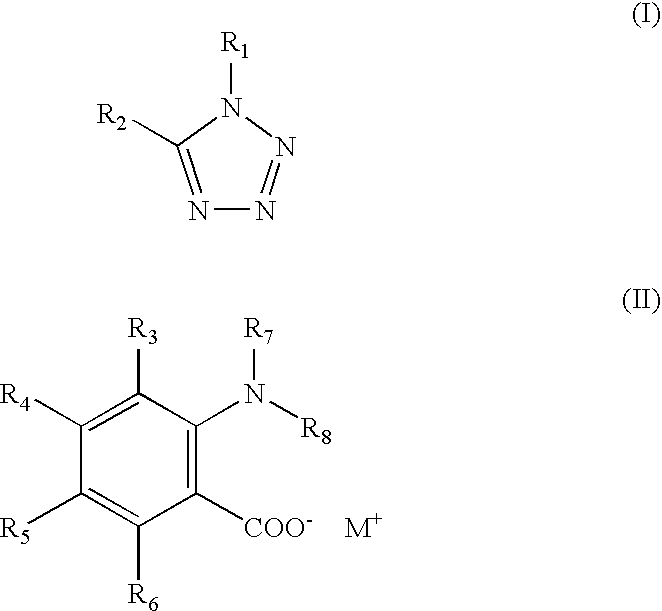Polishing composition and method of polishing with the same
a technology of composition and polishing method, applied in the direction of lapping machine, manufacturing tools, other chemical processes, etc., can solve the problems of complex cleaning step which is usually conducted after polishing in order to remove the polishing liquid remaining on the semiconductor surfa
- Summary
- Abstract
- Description
- Claims
- Application Information
AI Technical Summary
Benefits of technology
Problems solved by technology
Method used
Image
Examples
example 1
[0140] A water-based polishing liquid containing the following ingredients was prepared and evaluated under the polishing conditions shown below.
[0141] (Preparation of Polishing Liquid)
Abrasive grains (2) (abrasive particles)40 g / L(on solid basis)1H-Tetrazole (protective-film-forming agent)0.1 g / L Hydrogen peroxide (oxidizing agent)10 g / LGlycine (acid) 8 g / LpH7.0
(Polishing Conditions)
[0142] Work: 8-inch silicon wafer plated with copper
[0143] Polishing pad: IC1400 (Rodel Nitta Company)
[0144] Polishing machine: LGP-612 (Lapma Ster SFT)
[0145] Polishing pressure: 2.5 pai
[0146] Slurry supply rate: 200 mL / min
[0147] Work rotation speed / polishing pad rotation speed: 64 / 65 rpm
(Evaluation Methods)
[Polishing Rate]
[0148] With respect to each of before and after the polishing, the thickness of the copper film on the wafer was determined by conversion from a value of electrical resistance. The average polishing rate was determined from the difference between these thickness values. ...
PUM
| Property | Measurement | Unit |
|---|---|---|
| length | aaaaa | aaaaa |
| diameter | aaaaa | aaaaa |
| size | aaaaa | aaaaa |
Abstract
Description
Claims
Application Information
 Login to View More
Login to View More - R&D
- Intellectual Property
- Life Sciences
- Materials
- Tech Scout
- Unparalleled Data Quality
- Higher Quality Content
- 60% Fewer Hallucinations
Browse by: Latest US Patents, China's latest patents, Technical Efficacy Thesaurus, Application Domain, Technology Topic, Popular Technical Reports.
© 2025 PatSnap. All rights reserved.Legal|Privacy policy|Modern Slavery Act Transparency Statement|Sitemap|About US| Contact US: help@patsnap.com



